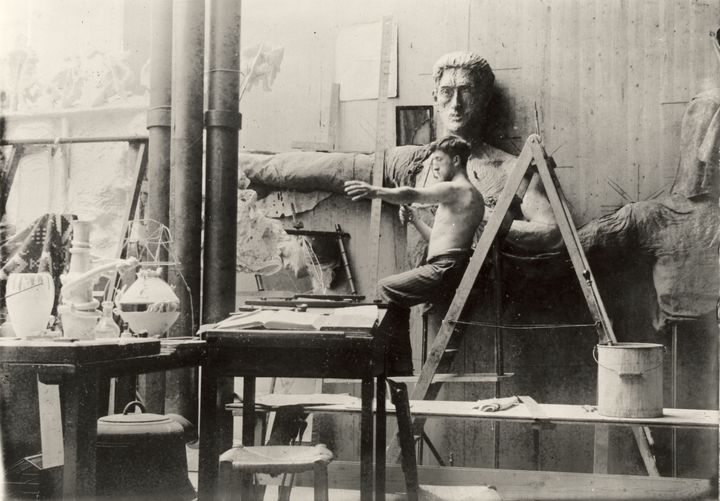J. F. Willumsen
Introduction

J. F. Willumsen’s letter archive at Willumsen’s Museum consists of more than 4,400 letters divided among a little over 800 different correspondents. Willumsen was a prolific and conscientious letter-writer. Since he spent much of his time travelling or living outside Denmark, he often stayed in touch with friends, colleagues, business connections and family through letters. The archive contains the letters Willumsen received from others, some of his own letters and a large number of drafts. As Willumsen only made minor changes when he wrote out the finished letter from a draft, much of the collection represents complete exchanges with letters both ‘sent’ and received.
The archive provides insight into Willumsen’s life, his development as an artist and his reflections on art. In time, it spans from the early years of his career, including his involvement in establishing Den Frie Udstilling (The Free Exhibition), Malende Kunstneres Sammenslutning (Association of Painting Artists) and Billedhuggerforeningen (Sculptors’ Association) and his attempt, in 1904, to found the Salon des Étrangers (Foreigners’ Salon) in Paris, to his later years, with solo exhibitions and an effort to establish a museum dedicated solely to his work. However, the letters in Willumsen’s archive also point beyond Willumsen’s own life and practice and address broader trends in Danish, European and American art. Willumsen’s extensive correspondence with colleagues in the Danish art scene further provides insights into other Danish visual artists’ practice, working conditions and travels, including many women artists, who are otherwise often invisible in art history. In the letters, the artists discuss travel destinations and exchange graphic techniques, glaze recipes and contact information to patrons and art collectors. The correspondence also paint a picture of prevailing conditions in society during the first half of the 20th century in a turbulent and war-torn Europe. Willumsen lived in France during both world wars, and was, in many ways, closer to the horrors of the war than his friends and colleagues in Denmark.